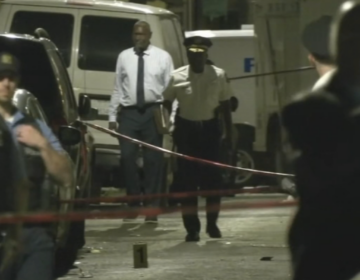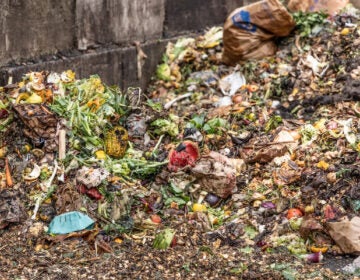Redlined zoning code draft proposes more changes
The Zoning Code Commission is currently undergoing the Herculean task of rewriting the city’s zoning code for the first time in nearly 50 years, and last month, it released its redlined draft. This is an update to the proposed new zoning code it penned in September after three years of work. The Commission plans to have a final draft — with even more changes — ready for City Council in February. The new redlined draft includes numerous revisions that are relevant to Northwest Philadelphia, so PlanPhilly thought it was time to follow up on its past zoning code series, which analyzed how the new code could affect everything from the height of buildings to urban agriculture to the power of developers.
One thing that’s clear from the redlined draft is how much sway communities can have about the proposed zoning code when they’re vocal. If you peek at the public comments the Commission has received, it’s obvious who’s involved and who is not: The East Falls Community Council submitted eight pages of comments. The East Falls Development Corporation submitted five. East Falls neighbors submitted two more. The Chestnut Hill Community Association handed in six. On the other hand, not a single civic group or community development corporation in Germantown submitted comments. Neither did any from Roxborough. In fact, the words “Roxborough,” “Germantown” and “Manayunk” only turn up two or three times in all 360 pages of public comments the Commission received. “West Oak Lane” does not show up at all.
This seems to make a huge difference. In its redlined draft, the Commission made several changes to the code that are relevant to Northwest Philadelphia, but after speaking with the Commission’s executive director, Eva Gladstein, community members and civic leaders, it appears that the greatest number of changes came to East Falls — all in response to neighborhood concerns. But you might not know it from talking to Meg Greenfield, chairwoman of the East Falls Community Council’s zoning and land use committee.
“It’s a good start,” she says of the neighborhood’s gains, drawing out the word “start” for several seconds. “But it’s not good enough.”
Fighting for old restrictions on signage, ventilation and trash storage
It’s true that the East Falls Community Council (EFCC) and the East Falls Development Corporation (EFDC) didn’t get everything they wanted. But here’s what they did land, thanks in no small part to Greenfield’s tenacity (and perpetual dissatisfaction): The EFCC and EFDC asked for its old signage restrictions back, which had been in the old East Falls overlay, but were not in the proposed code’s new, consolidated overlay for the community. They got the controls back, which disallow flashing and rotating signs, among other things. This is a particularly surprising victory, given that the Commission isn’t even working on the city’s signage controls until after it submits a draft to City Council.
“They’re working on the signage controls now, so they might get better,” says Gina Snyder, EFDC’s executive director. “But we said that until they get better, we want ours back.”
Then the EFCC and EFDC asked for its restaurant ventilation requirements back, which the Commission had also taken out as part of the proposed code’s new East Falls overlay. They got them, and, in fact, all eating and drinking establishments in the city will have to adhere to these rules if City Council passes the proposed code. They require that restaurants, delis, drive-thrus and other eateries to vent their kitchen exhausts through the roof.
“In East Falls, the proximity of residential areas to restaurants make cooking odors a problem,” says Greenfield. “Venting from the sides or rear of restaurants adversely affects nearby residents.”
The EFCC and EFDC also requested that they get their trash storage requirements back, which had been removed from their old East Falls overlay, too. And though they didn’t win them, exactly, they got close: Take-out restaurants must now submit a litter clean-up plan that the Department of Licenses & Inspection, which can approve it (or not) through special exception. Gladstein also says that the design standards in the proposed code for trash and recycling cover some of the community members’ concerns.
But still, the EFCC isn’t totally satisfied.
“We didn’t want take-out restaurants here at all,” says Greenfield in reference to the new litter clean-up plan.
It’s true that the EFCC and EFDC didn’t win every inning. They petitioned the Commission to disallow K-12 schools, farms, community gardens and the sale of live animals for human consumption in the East Falls overlay and other parts of the neighborhood, to no avail. They also requested — unsuccessfully — that group homes only be allowed by special exception throughout much of East Falls.
Still, says Snyder, “They took a lot of our comments and incorporated them.”
Review committee concerns
This is especially true compared to other communities throughout Northwest Philadelphia. Chestnut Hill — probably the second-most vocal community in the Northwest when it comes to zoning code reform — is extremely concerned about the proposed code’s new Civic Design Review committee. The Chestnut Hill Community Association (CHCA) believes that the committee — a group of architects, planners, designers and one community member that will advise developers on large-scale and high-impact projects — will stifle the review process they now enjoy. Currently, it takes the CHCA at least 38 days — and often many more — to advise developers on projects. Under the new Civic Design Review committee, they — and all communities throughout Philadelphia — will only have 30 days to do so.
The CHCA asked the Commission for more time, but they didn’t get it.
“We will continue to pursue and request that strongly,” says Walter Sullivan, CHCA’s president.
Establishing height limits for school buildings
One thing Chestnut Hill did score was a reduced height limit for some university buildings near certain residential districts. Under the new redlined draft, the Commission now requires that in SP-Institutional districts (think universities, hospitals and the like), buildings within 50 feet of a single-family or two-family residential district cannot be more than 20 feet higher than the height permitted for the residential district. This is an issue for Chestnut Hill residents because of proposed expansions at Chestnut Hill College, which Gladstein says will likely be SP-Institutional under the new code.
It’s also a concern of East Fallsers, because Philadelphia University, William Penn Charter School and the Drexel University College of Medicine will likely become SP-Institutional districts as well, says Gladstein.
But for Greenfield, the change isn’t enough.
“We wanted it to cover all institutional buildings within 100 feet of residences,” she says. “Otherwise, you’re really impinging on the residential character of the neighborhood.”
Stretching beyond neighborhood scope
There are also a number of changes in the redlined draft that will impact all of the Northwest, not just particular neighborhoods like East Falls or Chestnut Hill. For instance, on-premise dry cleaning uses will now not be allowed in CMX-2.5 districts, which will include most commercial properties in East Falls, Manayunk, Chestnut Hill and lower Germantown that currently have district control overlays.
And gas stations won’t be allowed in CMX-1 or CMX-2.5 districts either, which will include a huge number of commercial areas in the Northwest (as well as the rest of the city). All properties in districts previously known as “C-1” will now be zoned as “CMX-1,” and most areas now with district control overlays will be zoned as “CMX-2.5”
Also, a change was made to the code that will affect Northwest Philadelphia’s many green spaces: In the redlined draft, the Commission limited the number of uses in the Parks & Open Space districts — that includes all public parks — so that the sale of sundries, pharmaceuticals and convenience sales now won’t be allowed in the city’s parks.
Community feedback period continues
For those community members who’ve been less involved than, say, Greenfield, the public still has until Jan. 21 to comment on the redlined draft. And then, once it goes to City Council, Philly residents can voice their opinions yet again. But some folks in the Northwest, especially Germantown, aren’t sure their neighborhood will ever get involved.
David Hamme, an urban designer and a member of Germantown Community Connection, says his neighborhood has been busy patching the hole left by Germantown Settlement, a social service and housing agency that was ordered by a bankruptcy judge to sell off all its assets at the end of last year. Hamme also says Germantown is taking a different approach to revitalization.
“Rather than responding to things, we’re generating things,” he says, referring to recent work on expanding the arts and preserving historical sites in Germantown.
One Germantown resident, who asked to remain anonymous, remarked that the community isn’t getting involved for another reason entirely: “I don’t think people feel like they can do anything about the zoning code, that they can change it at all.”
Given the success of East Falls, that may be worth reconsidering.
WHYY is your source for fact-based, in-depth journalism and information. As a nonprofit organization, we rely on financial support from readers like you. Please give today.




